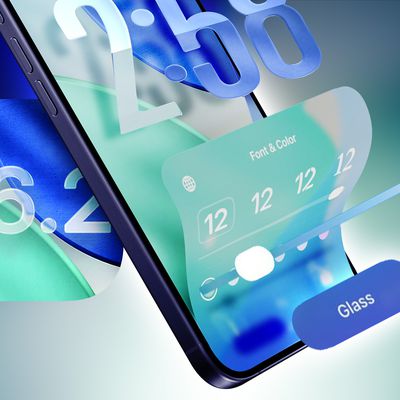Foldable iPhone Development Progressing Ahead of 2026 Launch
Apple moved its long-rumored foldable iPhone into its prototyping phase with suppliers last month ahead of a launch scheduled for next year, DigiTimes reports.

According to supply chain sources speaking to DigiTimes, Apple began its initial Prototype 1 (P1) phase in June. The device should complete prototype testing by the end of 2025 and then proceed to the Engineering Verification Test (EVT) stage, ahead of launch in the second half of 2026.
The P1 phase is followed by P2 and P3 phases before EVT. Each prototyping stage takes around two months. During this time, Apple's supply chain partners conduct limited trial runs before handing over assembly responsibilities to primary iPhone assemblers Foxconn and Pegatron, who will validate production yields and manufacturability.
The development status of the first foldable iPhone is now in line with the timeline of its other products, with P1 to P3 stages taking place around a year before Apple needs to start EVT, Design Verification Test (DVT), and eventually Mass Production (MP). The iPhone 17 lineup apparently concluded its EVT phase in the second quarter of this year.
DigiTimes added that Apple has paused work on a foldable iPad, which was originally expected to launch around the time of the foldable iPhone. The company's reasoning for this apparently includes manufacturing difficulties, increased production costs related to flexible display technology, and low consumer demand for big-screen foldables.
Apple's first foldable iPhone is currently likely to launch alongside the iPhone 18 lineup in the fall of 2026.
Popular Stories
Apple hasn't updated the Apple TV 4K since 2022, and 2025 was supposed to be the year that we got a refresh. There were rumors suggesting Apple would release the new Apple TV before the end of 2025, but it looks like that's not going to happen now.
Subscribe to the MacRumors YouTube channel for more videos.
Bloomberg's Mark Gurman said several times across 2024 and 2025 that Apple would...
While the iPhone 18 Pro and iPhone 18 Pro Max are not expected to launch for another nine months, there are already plenty of rumors about the devices.
Below, we have recapped 12 features rumored for the iPhone 18 Pro models.
The same overall design is expected, with 6.3-inch and 6.9-inch display sizes, and a "plateau" housing three rear cameras
Under-screen Face ID
Front camera in...
Apple is rumored to be introducing a foldable iPhone in September 2026, and since it will bring the biggest form factor change since the iPhone was introduced in 2007, curiosity about the design is high. A 3D designer created an iPhone Fold design based on rumors, and we printed it out to see how it compares to Apple's current iPhones.
Subscribe to the MacRumors YouTube channel for more ...
The Apple Fitness+ Instagram account today teased that the service has "big plans" for 2026. In a video, several Apple Fitness+ trainers are shown holding up newspapers with headlines related to Apple Fitness+.
What's Apple Fitness+ Planning for the New Year?
Something Big is Coming to Apple Fitness+
The Countdown Begins. Apple Fitness+ 2026 is Almost Here
2026 Plans Still Under ...
Apple's restrained artificial intelligence strategy may pay off in 2026 amid the arrival of a revamped Siri and concerns around the AI market "bubble" bursting, The Information argues.
The speculative report notes that Apple has taken a restrained approach with AI innovations compared with peers such as OpenAI, Google, and Meta, which are investing hundreds of billions of dollars in data...
Earlier this month, Apple released iOS 26.2, following more than a month of beta testing. It is a big update, with many new features and changes for iPhones.
iOS 26.2 adds a Liquid Glass slider for the Lock Screen's clock, offline lyrics in Apple Music, and more. Below, we have highlighted a total of eight new features.
Liquid Glass Slider on Lock Screen
A new slider in the Lock...
iPhone 17 Pro and Pro Max owners are having trouble with the speakers of their devices, and have complained about a static or hissing noise that occurs when the iPhone is charging.
There are multiple discussions about the issue on Reddit, the MacRumors forums, and Apple's Support Community, where affected users say there is a noticeable static noise "like an old radio." Some people report...
Apple reportedly tested a version of the first-generation AirPods with bright, iPhone 5c-like colored charging cases.
The images, shared by the Apple leaker and prototype collector known as "Kosutami," claim to show first-generation AirPods prototypes with pink and yellow exterior casings. The interior of the charging case and the earbuds themselves remain white.
They seem close to some...
























